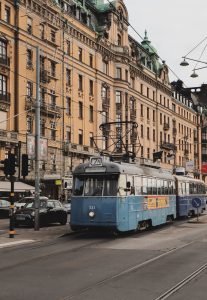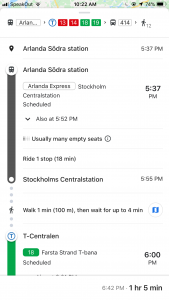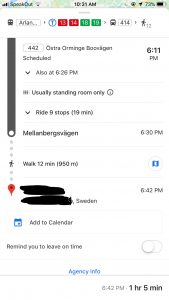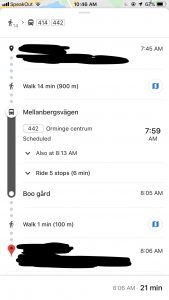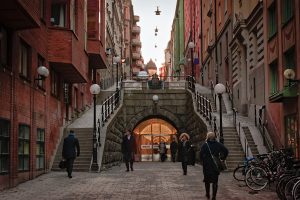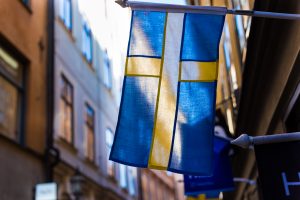Hello everyone! Today I bring you very sad news. Because of COVID-19, our international practicum to Sweden has been canceled. All of us are extremely heartbroken at the idea of not being able to go get hands-on experience as educators in a foreign country. We have spent so many hours planning our journey, booking accommodation, doing UVic travel modules, writing scholarship applications, and signing contracts/doing paperwork. I am not sure where this inquiry will go next as I am very sad and don’t know when I will ever make it to Sweden.
My phone stopped working two days ago. After 50 days of practicing Swedish in a row, my streak has died. Here is the final list of words I got up to know.
My ever-growing list of Swedish words/phrases that I have learned on Duolingo:
- A boy = En pojke
- A girl = En flicka
- A woman = En Kvinna
- I am a woman = Jag är en kvinna
- A man = En man/ Mannen
- Drinking = Dricker
- Water = Vatten
- Eating = äter
- And = Och
- A = Ett
- Bread = Bröd
- One book, several books = En bok, flera böcker
- A menu = En meny
- You = Du
- Have = Har
- A/one/an = En and Ett
- Newspaper(s) = Tidning(ar)
- A letter = Ett brev
- The child = Barnet
- Milk = Mjolk
- It = Det
- Read = Läser
- She = Hon
- He = Han
- Are/Is = är
- We = Vi
- You = Du
- Sandwich = smörgås
- They = De
- Rice = Ris
- Good morning = God morgon!
- Yes = Ja
- Please = Snälla
- So = så
- Then = då
- You are welcome = Varsågod
- Hello = Hej or Hållo
- Everyone = Alla
- Welcome = Välkommen
- I am sorry = Ursäkta
- Food = mat
- Pasta = Pasta
- Breakfast = Frukost
- Fruit = Frukt
- Sugar = Socker
- Cheese = Ost
- Coffee = Kaffe
- Lunch = lunch
- Good bye = Hej då
- Dog(s) = hund(ar)
- Moose = älg
- Cat(s) = Katt(er)
- Meat = Kott
- Horse(s) = Häst(er)
- It = det
- several = flera
- does not = inte (for example, hon läser inte brev = she does not read letters)
- has = har
- apple(s) = äpple(n)
- Our tomato = Vår tomat
- Lemon = citron
- Her (possessive) = hennes
- Their = deras
- soup = soppa
- my = min
- your = din
- his = hans
- dairy = mejeri, mjölkaffär and mjölkkammare

